Experimental Investigation on Combustion Characteristics of Hybrid Rocket Fuels with Multi-Angle Diverging Injector
Abstract
1. Introduction
2. Experimental Setup
3. Results and Discussion
3.1. Effect of Injector Type
3.2. Effect of Port Diameter
3.3. Effect of Fuel Type
3.4. Effect on Combustion Efficiency
4. Conclusions
- The multi-angle diverging injector showed a better performance by increasing the average regression rate and combustion efficiency by around 8% and 38.45%, respectively, for non-liquefying fuel, i.e., PVC+DOP, in comparison to the shower head injector.
- The multi-angle diverging injector showed the better performance by increasing the average regression rate and combustion efficiency by around 36.14% and 14.4%, respectively, for liquefying fuel, i.e., paraffin wax, in comparison to the shower head injector.
- Uniform burning downstream of the combustion chamber and sliver loss reduction was observed using the multi-angle diverging injector for PVC+DOP fuel, in comparison to non-uniform burning observed using the shower head injector.
- The power exponent value of around 0.35 was obtained for multi-angle diverging injectors and 0.68 for the shower head injector, depicting the effect of jet zone dynamics on the regression rate for the PVC+DOP fuel type.
Author Contributions
Funding
Conflicts of Interest
Nomenclature
| At | Throat area, m2 | Re | Reynolds number |
| AP | Port area, m2 | B | Blowing number |
| a | Oxidizer mass flux constant | mf | mass of the fuel consumed, g |
| n | Power exponent of mass flux | di | initial port diameter, mm |
| ρf | Density of fuel, kg/m3 | Lg | length of the fuel grain, mm |
| C*exp | Experimental characteristic velocity, m/s | tb | burn time, s |
| C*theo | Theoretical characteristic velocity, m/s | ṙ | regression rate, mm/s |
| C*ox | Characteristic velocity of oxidizer, m/s | ṁox | Oxidizer mass flow rate, g/s |
| L/D | Ratio of total length to initial port diameter of fuel | ṁf | Fuel mass flow rate, g/s |
| Isp | Specific impulse, Ns/kg | η | Combustion efficiency |
| Pc | Average chamber pressure, Psi | ṁt | Total mass flow rate of propellant, g/s |
| Ḡ | Average mass flux, kg/s. m2 | Tc | Combustion chamber temperature, K |
| Gox | Oxidizer mass flux, kg/s. m2 | Tox | Oxidizer temperature, K |
Appendix A
| Injector Type | Regression Rate (mm/s) | Oxidizer Mass Flux (kg/s. m2) | Average Mass Flux (kg/s. m2) | Burn Time (s) |
|---|---|---|---|---|
| Shower head injector (axial injection) |
| 76.19 60.13 48.88 41.31 | 102.86 84.18 69.25 57.15 | 2 2 2 2 |
| Multi-angle diverging injector |
| 74.92 58.44 47.41 39.62 | 104.88 81.82 68.75 56.78 | 2 2 2 2 |
| Injector Type | Regression Rate (mm/s) | Oxidizer Mass Flux (kg/s. m2) | Average Mass Flux (kg/s. m2) | Burn Time (s) |
|---|---|---|---|---|
| Shower head injector (axial injection) |
| 71.22 51.26 39.27 | 138.39 99.61 76.32 | 1 1 1 |
| Multi-angle diverging injector |
| 65.68 42.61 31.05 | 151.08 99.42 76.61 | 1 1 1 |
References
- Altman, D.; Humble, R. Hybrid rocket propulsion systems. In Space Propulsion Analysis and Design, 1st ed.; Humble, R.W., Henry, G.N., Larson, W.J., Eds.; McGraw-Hill: New York, NY, USA, 1995; pp. 365–401. [Google Scholar]
- Sutton, G.P.; Biblarz, O. Hybrid Propellant Rockets. In Rocket Propulsion Elements, 7th ed.; John Wiley & Sons: New York, NY, USA, 2001; pp. 585–593. [Google Scholar]
- Marxman, G.A.; Gilbert, M. Turbulent Boundary Layer Combustion in the Hybrid Rocket. Symp. (Int.) Combust. 1963, 9, 371–383. [Google Scholar] [CrossRef]
- Smoot, L.D.; Price, C.F. Pressure Dependence of Hybrid Fuel Regression Rates. AIAA J. 1967, 5, 102–106. [Google Scholar] [CrossRef]
- Wooldridge, C.E.; Marxman, G.A.; Kier, R.J. Investigation of Combustion Instability in Hybrid Rockets; Stanford Research Institute: Stanford, CA, USA, 1969. [Google Scholar]
- Sankaran, V. Computational Fluid Dynamics Modelling of Hybrid rocket Flow-fields. In Fundamentals of Hybrid Rocket Combustion and Propulsion; Kuo, K., Chiaverini, M., Eds.; Progress in Astronautics and Aeronautics, AIAA: Reston, VA, USA, 2007; Volume 218, pp. 323–349. [Google Scholar]
- Kumar, R.; Ramakrishna, P.A. Effect of Protrusion on the Enhancement of Regression Rate. Aerosp. Sci. Technol. 2014, 39, 169–178. [Google Scholar] [CrossRef]
- Kim, S.; Lee, J.; Kim, G.; Cho, J.; Kim, J.; Moon, H.; Sung, H.; Park, S. Combustion Characteristics of the Cylindrical Multiport Grain for Hybrid Rocket Moto. In Proceedings of the 45th AIAA/ASME/SAE/ASEE Joint Propulsion Conference & Exhibit, Denver, CO, USA, 2–5 August 2009. [Google Scholar]
- Carrick, P.G.; Larson, C.W. Lab Scale Test and Evaluation of Cryogenic Solid Hybrid Rocket Fuels. In Proceedings of the 31st AIAA/ASME/SAE/ASEE Joint Propulsion Conference and Exhibit, San Diego, CA, USA, 10–12 July 1995. [Google Scholar]
- Thomas, J.C.; Petersen, E.L.; DeSain, J.D.; Ridlehuber, M.N.; Brady, B.B. Hybrid Rocket Burning Rate Enhancement by Nano-scale Additives in HTPB Fuel Grains. In Proceedings of the 50th AIAA/ASME/SAE/ASEE Joint Propulsion Conference, Cleveland, OH, USA, 28–30 July 2014. [Google Scholar]
- Dario, P. Approaches to Low Fuel Regression Rate in Hybrid Rocket Engines. Int. J. Aerosp. Eng. 2012, 2012. [Google Scholar] [CrossRef]
- Lee, C.; Na, Y.; Byun, J.W.L.Y.H. Effect of Induced Swirl Flow on Regression rate of Hybrid Rocket Fuel by Helical Grain Configuration. Aerosp. Sci. Technol. 2007, 11, 68–76. [Google Scholar] [CrossRef]
- Carmicino, C.; Sorge, A.R. Role of Injection in Hybrid Rockets Regression Rate Behaviour. J. Propuls. Power 2005, 21, 606–612. [Google Scholar] [CrossRef]
- Pucci, J.M. The Effects of Swirl Injector Design on Hybrid Flame-Holding Combustion Instability. In Proceedings of the 38th AIAA/ASME/SAE/ASEE Joint Propulsion Conference and Exhibit, Indianapolis, Indiana, 7–10 July 2002; pp. 2002–3578. [Google Scholar]
- Carmicino, C.; Sorge, A.R. Performance comparison between two different injector configurations in a hybrid rocket. Aerosp. Sci. Technol. 2007, 11, 61–67. [Google Scholar] [CrossRef]
- Di Martino, G.D.; Malgieri, P.; Carmicino, C.; Savino, R. A Simplified Computational Fluid-Dynamic Approach to the Oxidizer Injector Design in Hybrid Rockets. Acta Astronaut. 2016, 129, 8–21. [Google Scholar] [CrossRef]
- Di Martino, G.D.; Carmicino, C.; Savino, R. Transient Computational Thermofluid-Dynamic Simulation of Hybrid Rocket Internal Ballistics. J. Propuls. Power 2017, 33, 1395–1409. [Google Scholar] [CrossRef]
- Berwal, P.; Biswas, S. Investigating the Effect of Injector Type on the Regression Rate of the Hybrid Rocket. In Proceedings of the 11th International High Energy Materials Conference & Exhibits, Pune, India, 23–25 November 2017. [Google Scholar]
- Berwal, P.; Biswas, S. Study the Effect of Axi-swirl Injector on the Regression Rate of the Hybrid Rocket. In Proceedings of the 33rd National Convention of Aerospace Engineers at Iei, Pune India, 16–17 November 2019. [Google Scholar]
- Caravella, J.R.; Heister, S.D.; Wernimont, E.J. Characterization of Fuel Regression in a Radial Flow Hybrid Rocket. J. Propuls. Power 1998, 14, 51–56. [Google Scholar] [CrossRef]
- Bianchi, D.; Nasuti, F.; Carmicino, C. Hybrid Rockets with axial injector: Port Diameter effect on fuel regression rate. J. Propuls. Power 2016, 32, 984–996. [Google Scholar] [CrossRef]
- Karabeyoglu, M.A.; Cantwell, B.J.; Altman, D. Development and testing of paraffin-based hybrid rocket fuels. In Proceedings of the 37th AIAA/ASME/SAE/ASEE Joint Propulsion Conference and Exhibit, Salt Lake City, UT, USA, 8–11 July 2001; pp. 2001–4503. [Google Scholar]
- Karabeyoglu, M.A.; Altman, D.; Cantwell, B.J. Combustion of liquefying hybrid propellants: Part 1, General theory. J. Propuls. Power 2002, 18, 610–620. [Google Scholar] [CrossRef]
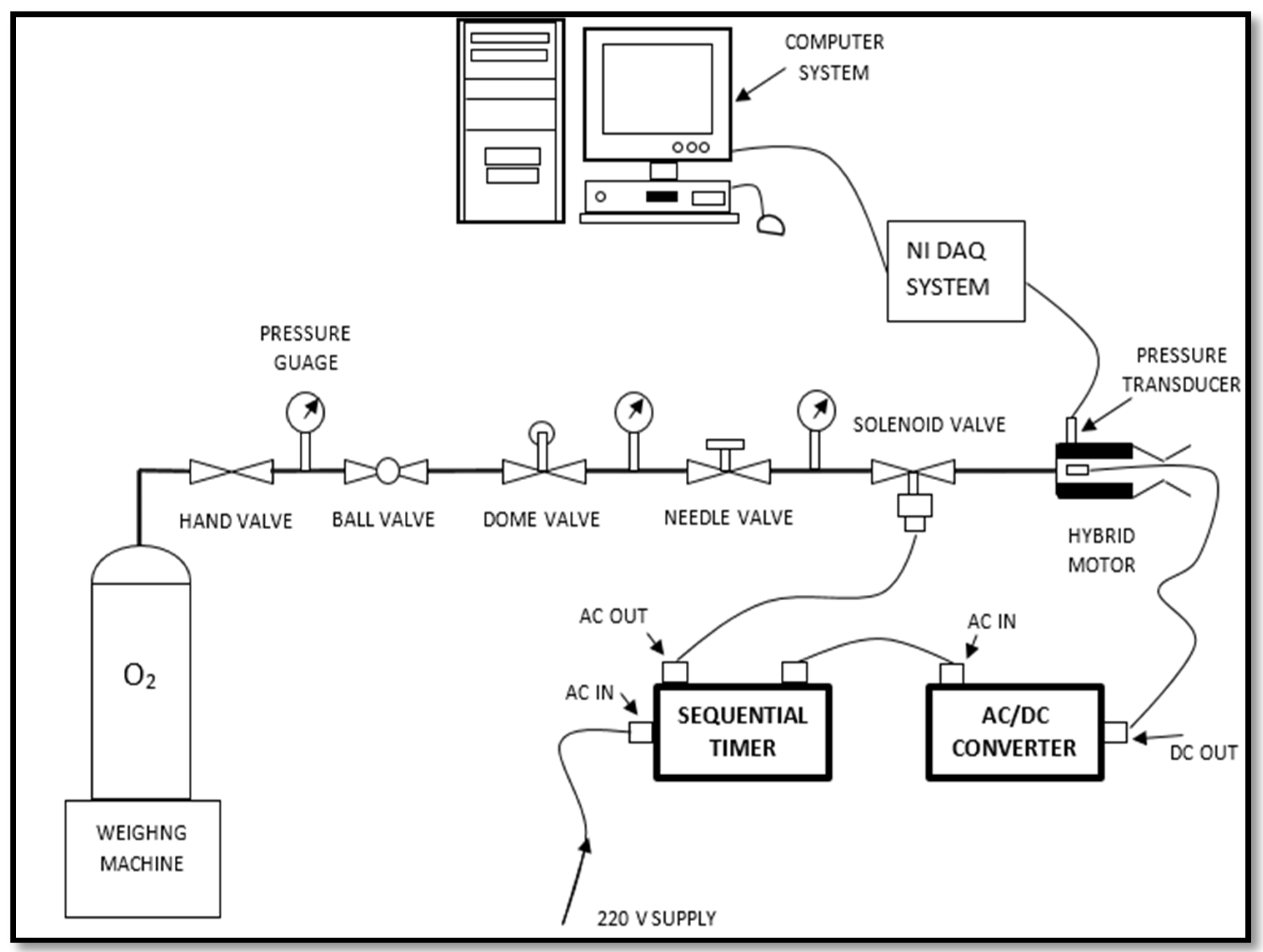

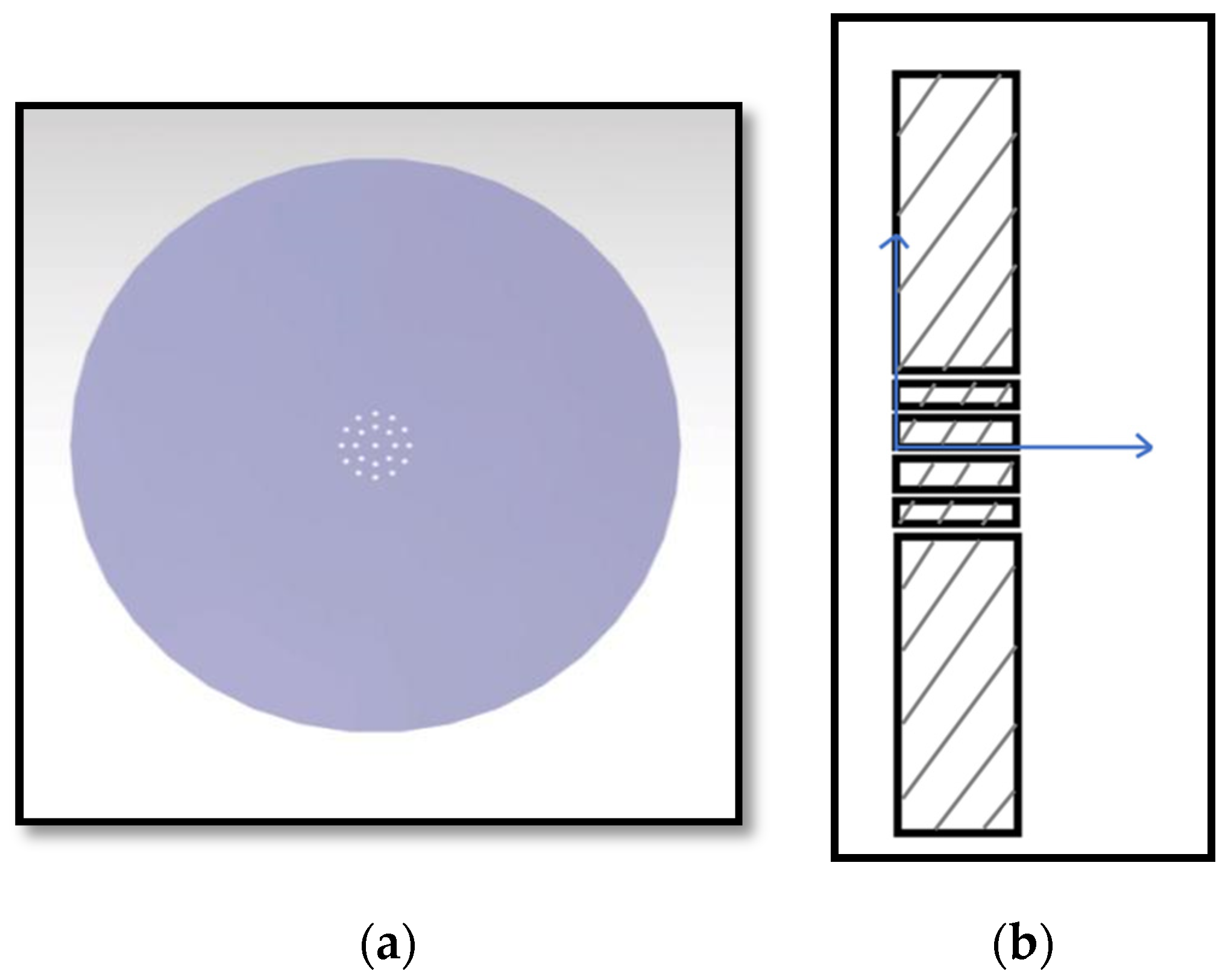
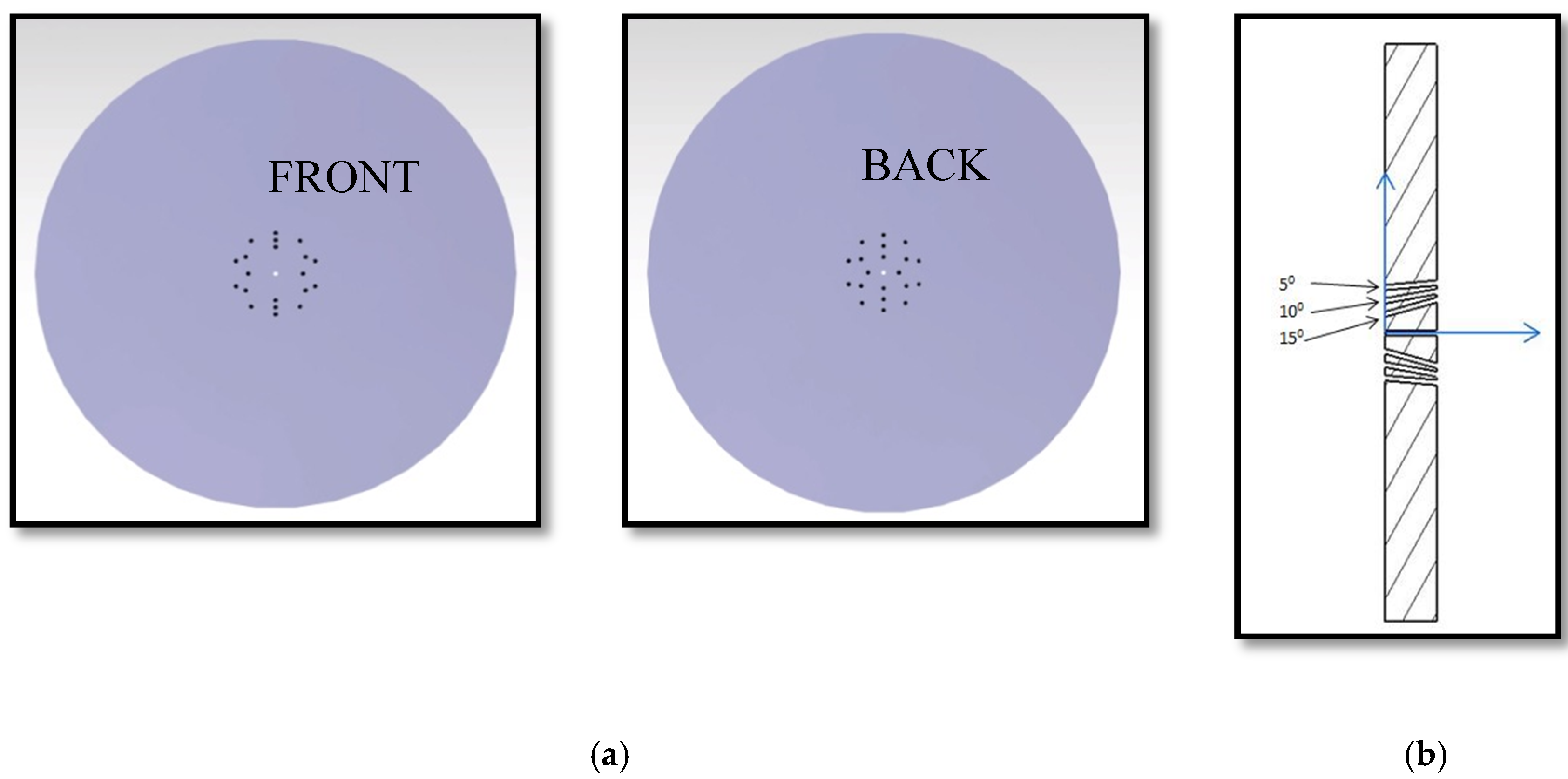
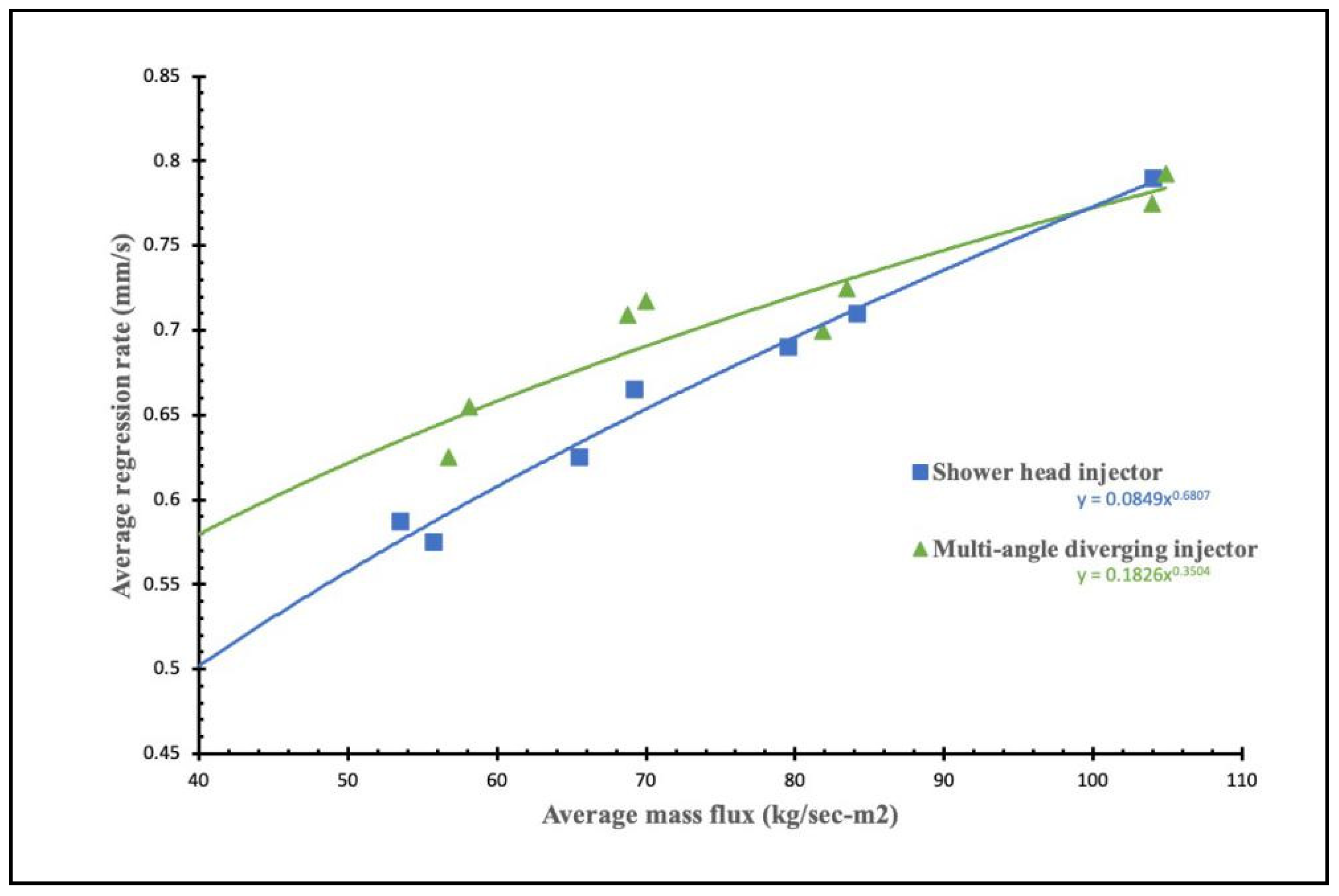
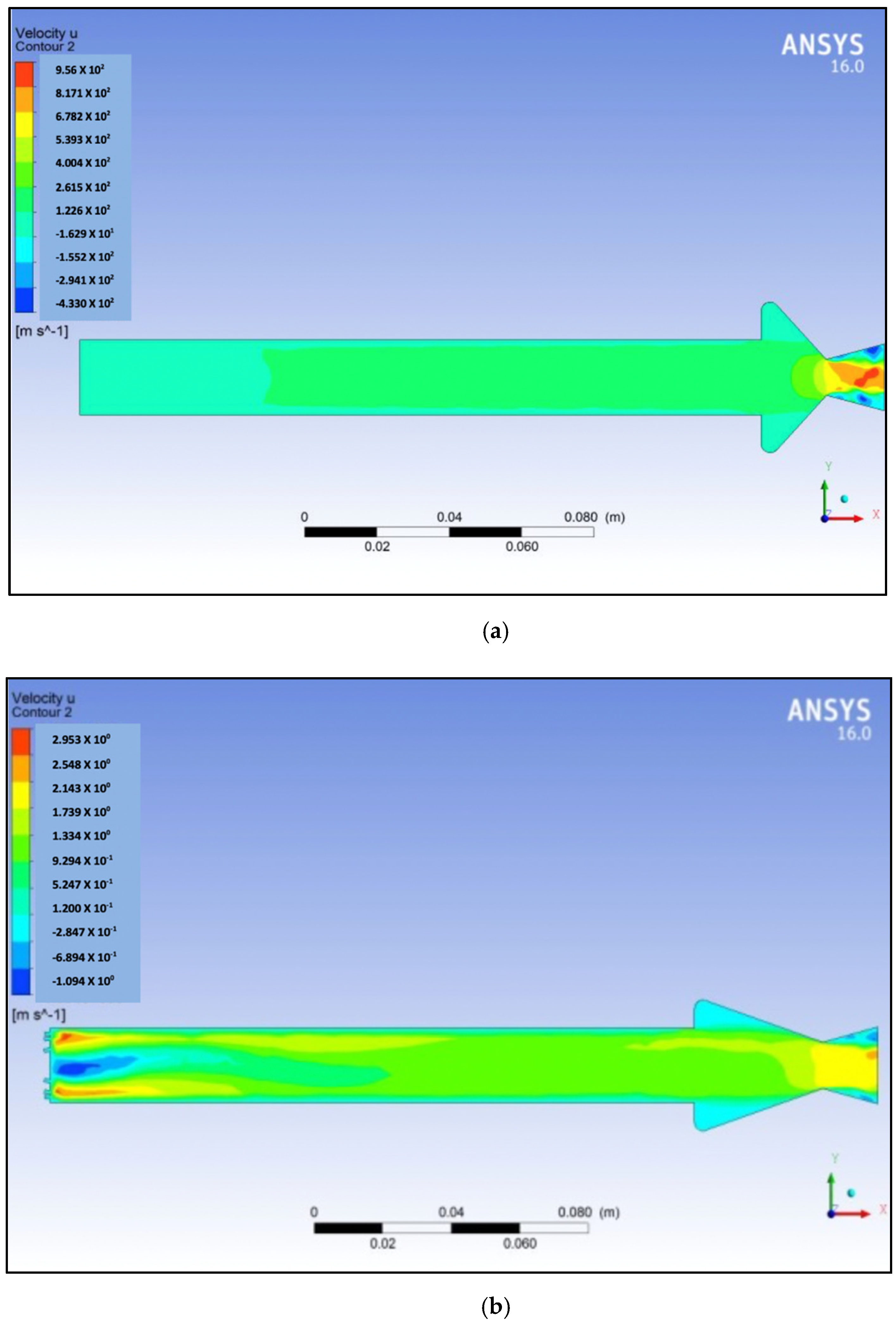
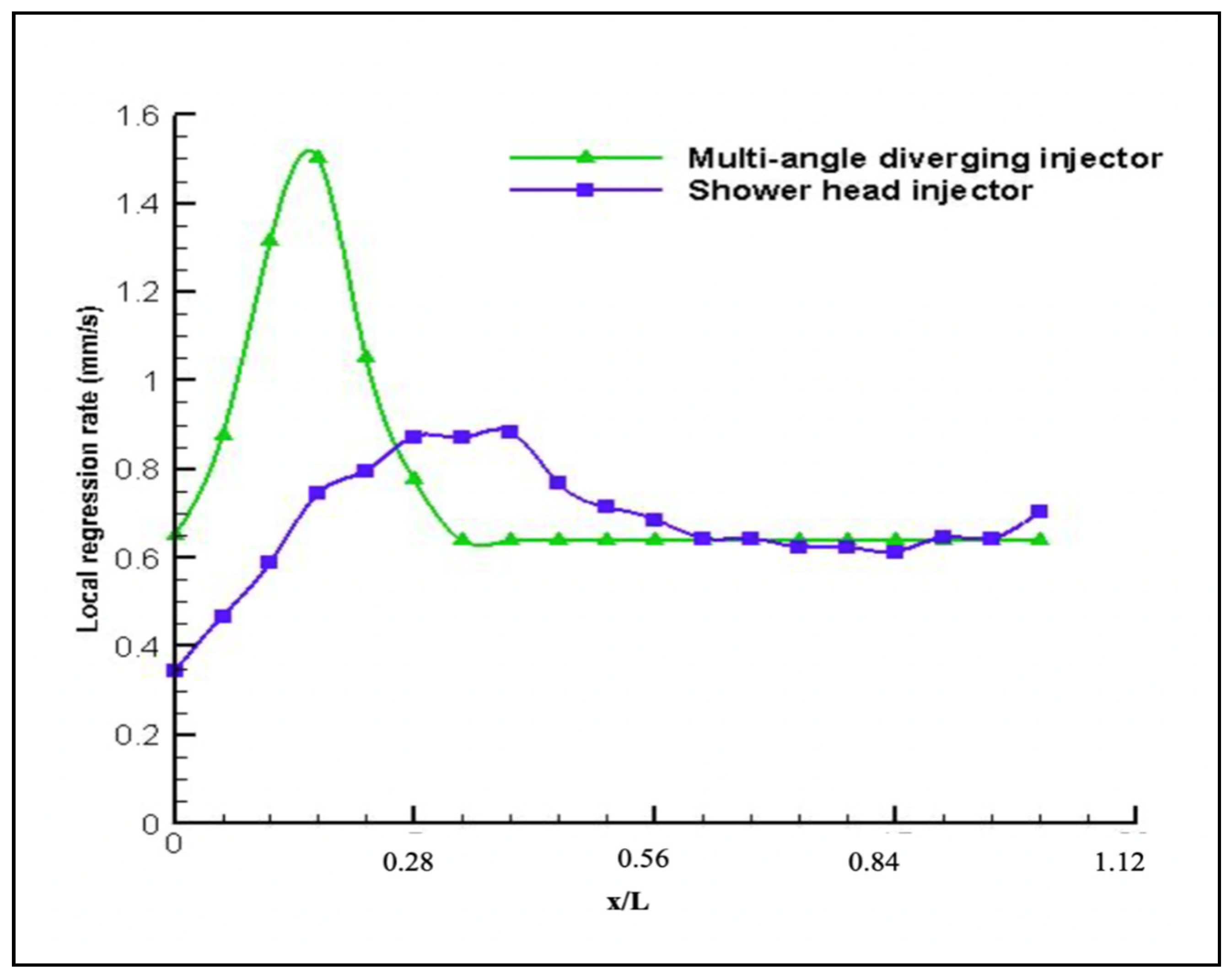

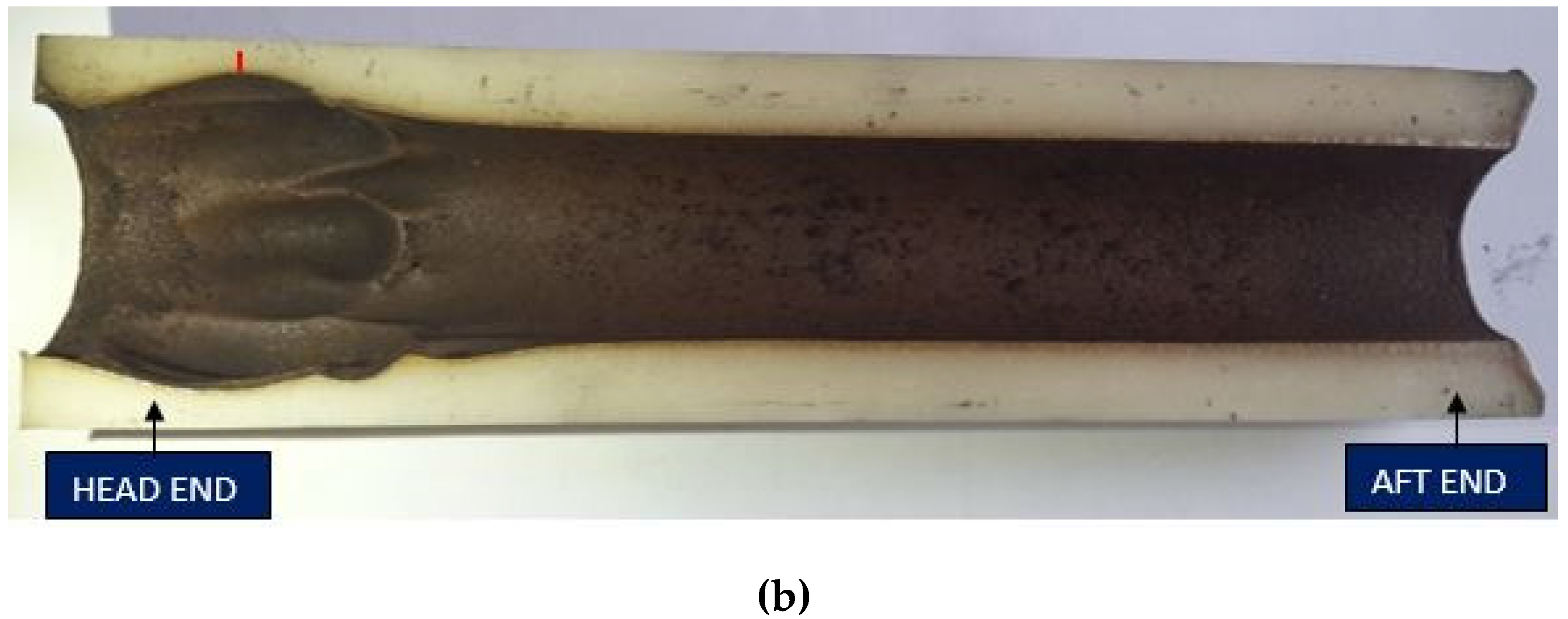

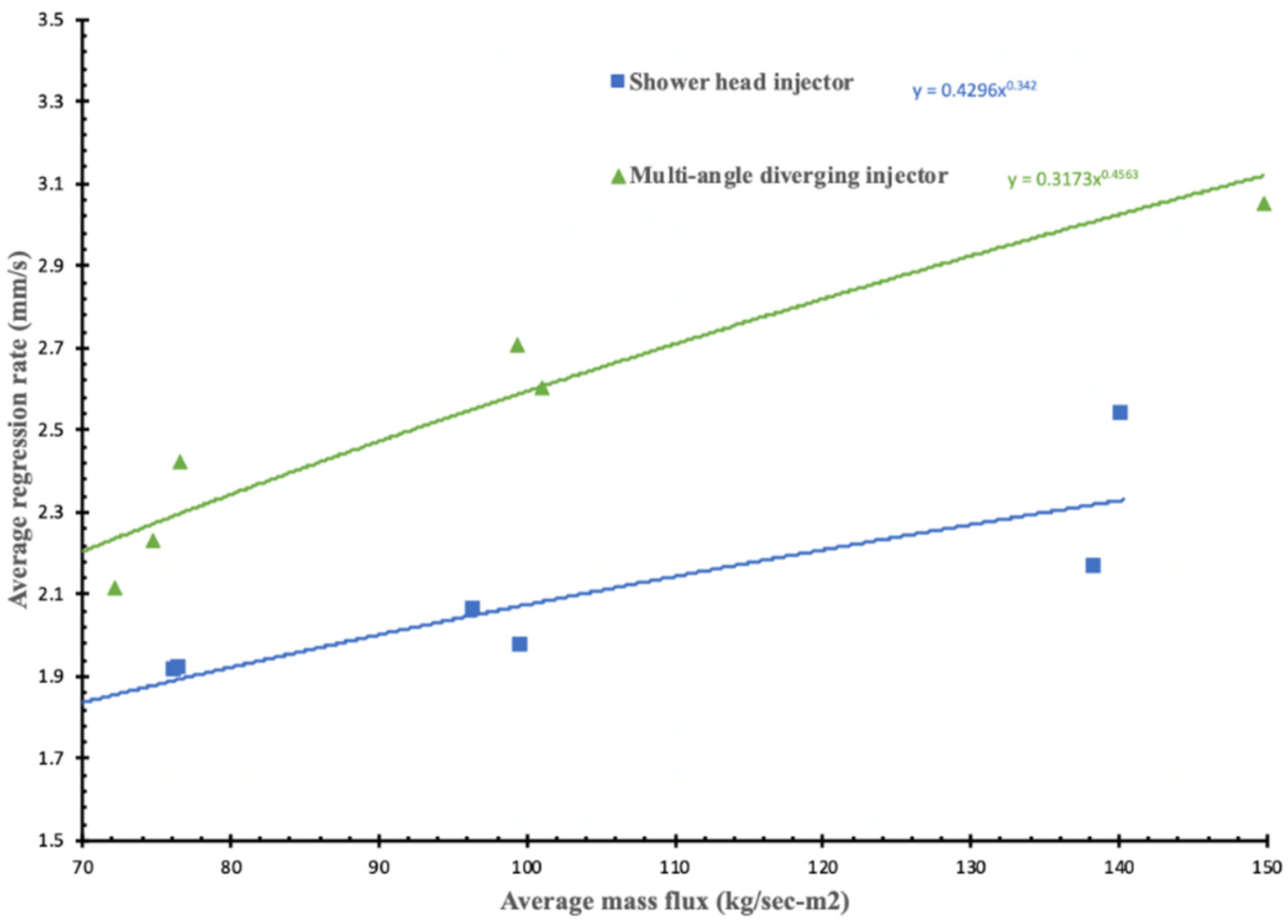
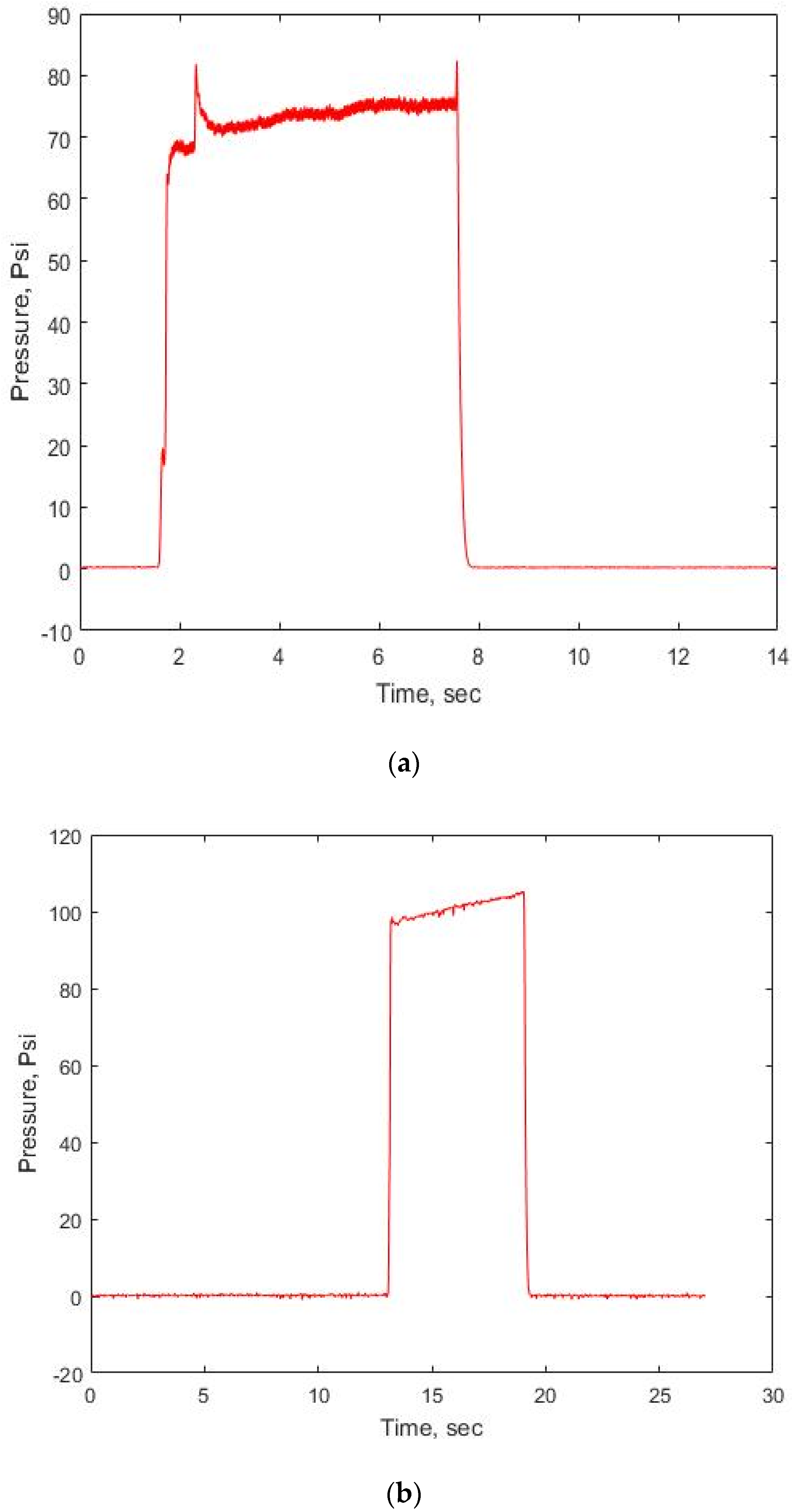
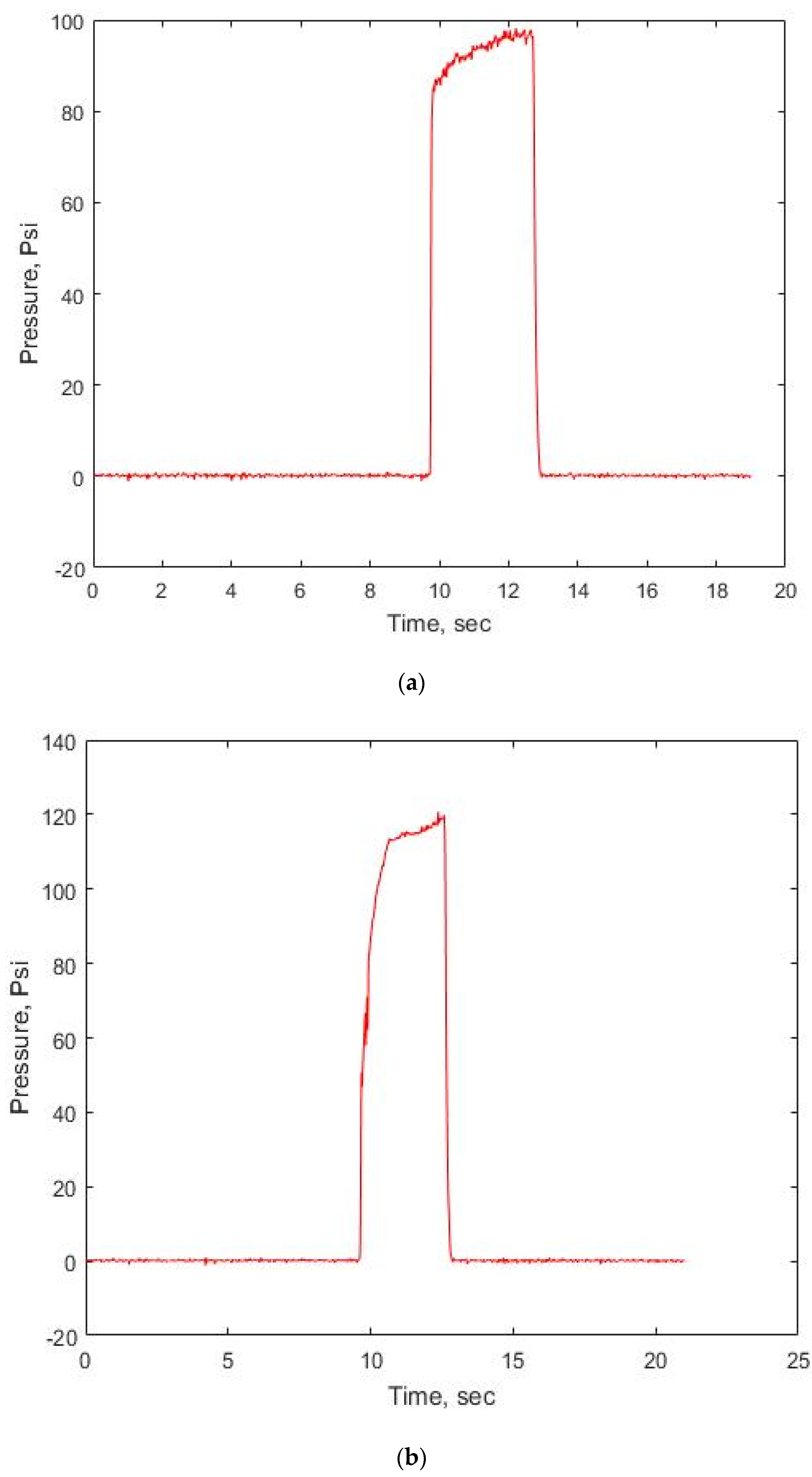
| Port Diameter (mm) | Average Regression Rate (mm/s) | Burn Time (s) |
|---|---|---|
| 21 | 0.74 | 6 |
| 24 | 0.73 | 6 |
| 28 | 0.67 | 6 |
| Injector Type | Fuel Type | Average Chamber Pressure (Psi) | O/F Ratio | Theoretical Characteristic Velocity (m/s) | Combustion Efficiency (%) |
|---|---|---|---|---|---|
| Shower head injector | PVC | 74.26 | 2.55 | 1558.5 | 61.9 |
| Multi-angle diverging injector | PVC | 101.33 | 0.76 | 1505.5 | 85.7 |
| Shower head injector | Paraffin wax | 93.83 | 0.96 | 1382.3 | 60.23 |
| Multi-angle diverging injector | Paraffin wax | 115.79 | 0.73 | 1298.3 | 68.90 |
© 2020 by the authors. Licensee MDPI, Basel, Switzerland. This article is an open access article distributed under the terms and conditions of the Creative Commons Attribution (CC BY-NC-ND) license (https://creativecommons.org/licenses/by-nc-nd/4.0/).
Share and Cite
Berwal, P.; Biswas, S. Experimental Investigation on Combustion Characteristics of Hybrid Rocket Fuels with Multi-Angle Diverging Injector. Int. J. Turbomach. Propuls. Power 2020, 5, 12. https://doi.org/10.3390/ijtpp5020012
Berwal P, Biswas S. Experimental Investigation on Combustion Characteristics of Hybrid Rocket Fuels with Multi-Angle Diverging Injector. International Journal of Turbomachinery, Propulsion and Power. 2020; 5(2):12. https://doi.org/10.3390/ijtpp5020012
Chicago/Turabian StyleBerwal, Pragya, and Shelly Biswas. 2020. "Experimental Investigation on Combustion Characteristics of Hybrid Rocket Fuels with Multi-Angle Diverging Injector" International Journal of Turbomachinery, Propulsion and Power 5, no. 2: 12. https://doi.org/10.3390/ijtpp5020012
APA StyleBerwal, P., & Biswas, S. (2020). Experimental Investigation on Combustion Characteristics of Hybrid Rocket Fuels with Multi-Angle Diverging Injector. International Journal of Turbomachinery, Propulsion and Power, 5(2), 12. https://doi.org/10.3390/ijtpp5020012





